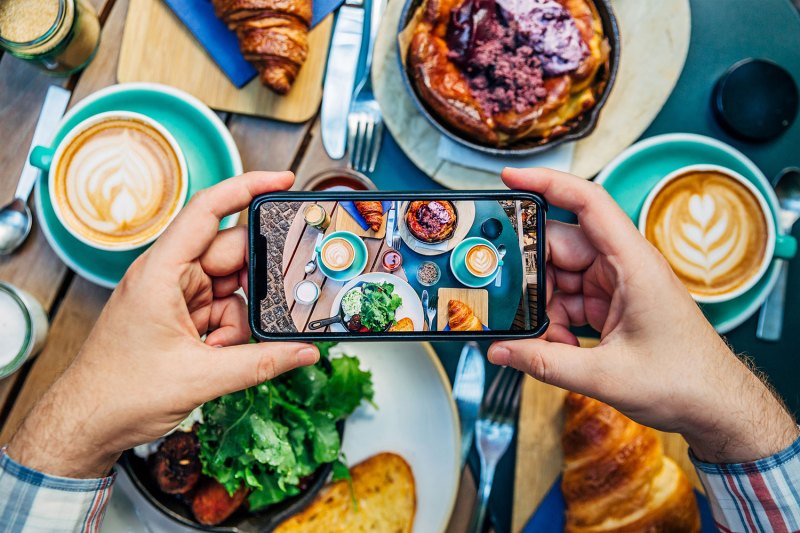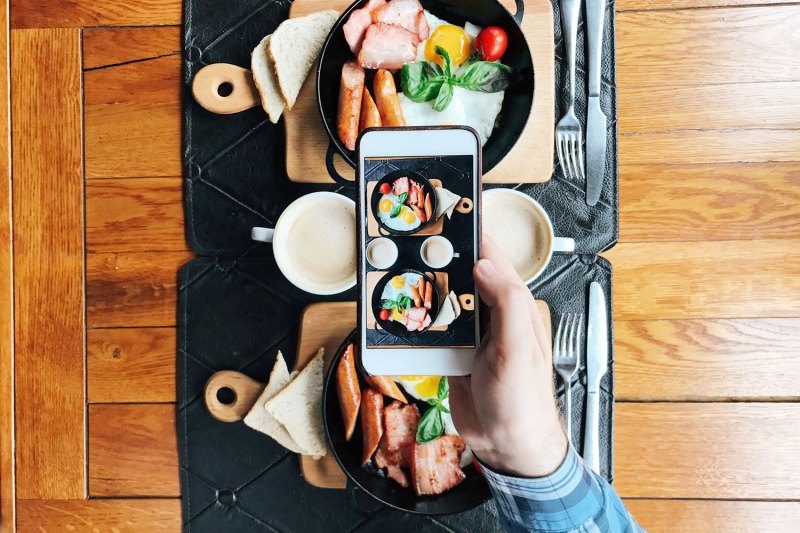We are in bed with the food we eat. It’s been the case since the Food Network took flight and figures like Michael Pollan and David Chang transitioned from mere industry types to icons. Through their writing and cooking, respectively, they taught us the merits of being very close to our sustenance.

The culinary doors swung wide open and a sexy finger ushered the masses in. The dishes we wanted most, we began to lust for. Camera lenses caught them in their most intimate scenarios, barely dressed and surrounded by steam, dim lights, and salivating mouths. Food porn had arrived.
These days, we expect our cookbooks to function like coffee table mainstays, driven by enticing imagery. It’s a little ironic, too, as we still seem to chuckle at the restaurant menu that includes photos. But that’s not the point. The point is that we — or they, the powers that be — have capitalized on our inherent and instinctive drive for food. It’s a pull not entirely unlike one’s sex drive. It has an animal basis and can spin out of control, as the porn industry so often reflects.
Take hot dog eating contests or any number of over-the-top cooking shows, lionizing excess. Sometimes, it’s more subtle, like the forearm tattoo of a piece of cutlery or a cross-section of a pig that every sous chef in America must now wear. How did we get here again?
John Valls is a Portland, Oregon-based food photographer. His work can be found in outlets like Travel Oregon, wineries like Ponzi, and lodging companies like Hilton, among others. He brings up an interesting shift in food presentation that happened not too long ago.
“Ten or fifteen years ago, chefs were plating their food stacked,” he says. “It was certainly impressive for the diner — they’d have to tackle the dish at the table.” But that also invited low-angle photography, to capture the layers. Today, iPhones and wider-angle lenses allow for the bird’s-eye shot. “Of course, this makes the image immediate and very personal since you’re seeing the diner’s view.”

Celebrity culture too has played its massive role. “It’s funny though, at a time when people are eating fewer meals at home and cooking very little, it seems that we can’t get enough of people like David Chang and Anthony Bourdain.” Valls believes that it’s perhaps the human desire for communal eating that connects us to such figures and their culinary escapades.
Kathryn Elsesser also shoots all things gastronomy in the food-rich Pacific Northwest. She’s shot food all over the world, for scores of eateries, vineyards, and publications.
“Instagram and the influencer have had a major influence on how food is presented,” Elsesser says. “This cannot be understated and can result in a homogeneity of the images.” She says you don’t have to look much farther than the ubiquitous shot-from-above plate of grub. Bon Appétit made it famous and social media has fully run with it. Can you recall the last time you were at a nice restaurant and didn’t witness at least one soul taking such a picture?

Pinterest, Elsesser says, has its own aesthetic, one that’s dark and moody. “In some ways, it’s not necessarily about the food anymore. It’s more art directed,” she says. “So when a photographer creates images that are new and initially refreshing for their differences — if it resonates, everyone starts copying it.”
And to be frank, it’s not always sexy. It’s hard to make certain dishes tantalizing. A stew, for instance, requires some finagling and probably a good deal of styling to turn anybody on. Spam looks like, well, spam. And there’s nothing remotely hot about Turducken.
“Consider a filet mignon with bordelaise, served on a bed of roasted potatoes,” Valls says. “Brown on brown on brown. In instances like this, I’ll collaborate with the chef to help them re-envision the plating so that we can create an image that looks absolutely delicious. Great chefs are really good at composing their dishes for the diner, but sometimes need tips on how to plate for the camera.”
But then again, it can be romantic, causing present-day photographers to evoke the words of their idols, the ones who made it all romantic in the first place.
“I always appreciate the Ansel Adams quote, ‘There’s nothing worse than a sharp image of a fuzzy concept,’” Valls says.


